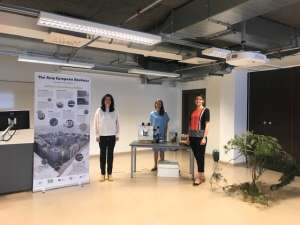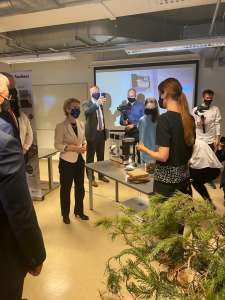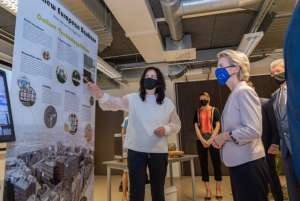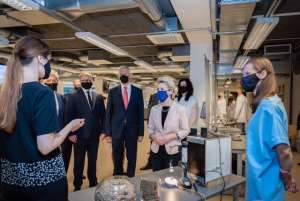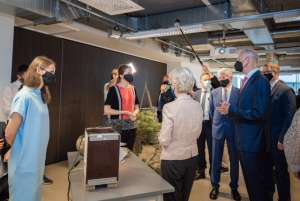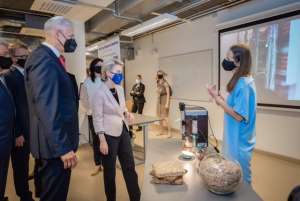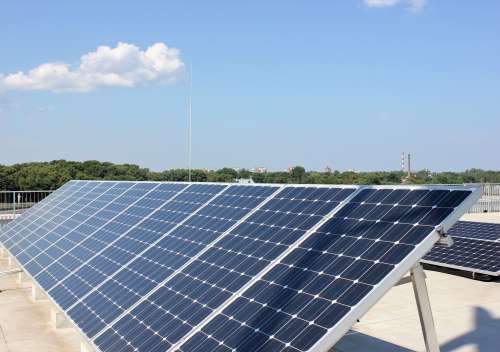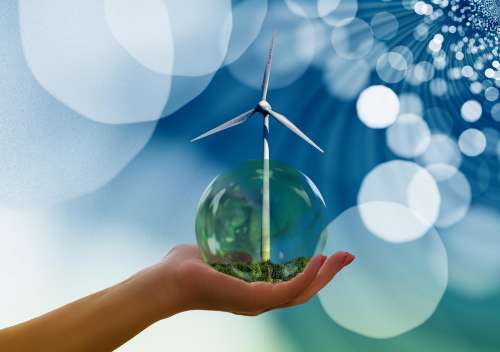RTU’s IESE tackles the challenge of combining technology, culture, and nature in one synergy. In the project “Improvement of building energy efficiency Technologies (I-BEET)” (No. 03000-3.1.2-e/163) focused on the transition from traditional to positive energy block we study both existing building stock supporting the Renovation Wave goals and new buildings promoting smarter technologies as well as the use of renewables available on-site. Our work in RTU’s Institute of Energy Systems and Environment always has been focused on human well-being in liveable surroundings without compromise to the environment. It should become the new lifestyle.
During the President of the European Commission (EC) Ursula von den Leyen’s visit to RTU, professor Andra Blumberga highlighted the social acceptance challenges in the energy transition to achieve The Green deal goals. Project “Bridging the Carbon Neutrality Gap in Energy Communities: Social Sciences and Humanities Meet Energy Studies (BRIDGE)” (Nr. lzp-2020/1-0256) will study behaviour patterns in the decision-making process on issues related to energy efficiency and energy community. Multi-player games will be created in the project allowing to reveal attitudes to crucial aspects in the energy transition.
In addition, EC president and Latvia’s prime minister Krišjānis Kariņš was acquainted with the natural thermal insulation material by showing how our communities can reduce the negative impact on the environment by making our living spaces energy efficient. Energy efficiency can be achieved by thermally insulating our living spaces. As at this point fossil or mineral solutions are not an sustainable option anymore, hence we in IESE are working on bio-based thermal insulation material. In line with the EU Green deal local bioresource must be used to produce higher added value materials. Natural thermal insulation material is made from forest logging residues and bio-based binder, as a result is has lower life cycle impact and is easily recyclable at the end of its life. In addition, it has better hygrothermal properties compared to conventional thermal insulation materials. We are looking forward to natural thermal insulation material to strengthen the EU bioeconomy.
For faster decarbonisation of building stock, we need conceptually new ideas on how we perceive building thermal envelope – what if it could become an active part of building energy balance? Senior researcher Ruta Vanaga presented dynamic solar facade system developed in Fundamental and applied research project “Smart building envelope with solar Energy storage (EVEREST)” funded by the Latvian Science Council (Nr. lzp-2019/1-0363). Innovative concepts can be borrowed from nature – the idea of this particular solar facade is borrowed from marine mammals that use oily layer of blubber for energy storage and insulation, so that the inner core of the body would keep constant temperature. In dwellings we need the same. A facade module acts as an energy converter – it harvests solar energy available on site, stores it in a phase change material that has significantly higher heat capacity compared to other building materials and releases to indoor space when needed. Active components adjusting to changes in intensity of solar radiation ensures faster harvesting of solar energy and prevents from heat losses, when solar radiation is not available. Thus, biomimetic ideas can help to create smarter buildings.



